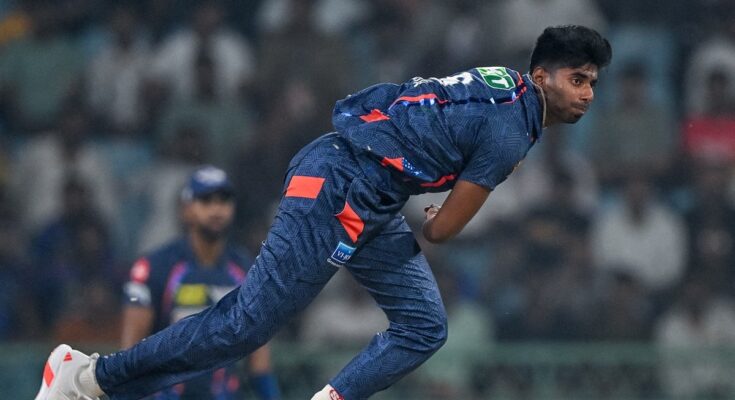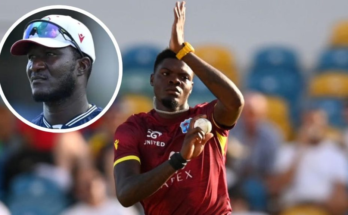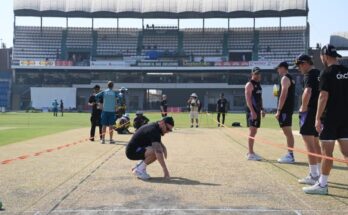Mayank Yadav turned into an instant sensation after his searing spell on IPL debut, reminding the cricket-watching world that few sights in the sport match the triumph of express pace bowling.
That night at the Ekana Stadium, Punjab Kings needed 98 in 51 balls with all ten wickets in hand. It was their match to lose, but Mayank Yadav took out Jonny Bairstow, Prabhsimran Singh, and Jitesh Sharma – each of them with a short-pitched ball – to finish with 4-0-27-3. Punjab fell 21 short.
The spell changed the course of the match. Mayank was accurate. He had a dangerous bouncer. But despite that – and the fact that he was debuting – that was not why he hit the headlines.
In cricket, the team that scores more, wins. Cricketers contribute towards maximising their team’s score or minimising the opposition’s. These numerical contributions are celebrated. The sport has undergone many a change over centuries, but this has remained a constant.
Yet, throughout Mayank’s hostile spell, all eyes were on another number, at the left corner of the ticker. The pace of a delivery, or lack of it, is neither necessary nor sufficient to determine a bowler’s quality: there have been all-time greats who were not express, while genuine quicks have faded away without leaving an impact.
But as Mayank kept hurrying the batters, the spectators oohed and aahed, and the broadcasters kept showing graphics of the fastest balls of the season. Such was his pace that he would have been at the top of the social media trends even if he had not taken a single wicket.
Mayank breached the 155 kph barrier that night. Not 150 – that happens from time to time – but 155. Four balls after that viral 155.8 kph thunderbolt, he hurled one at 153.4. Nandre Burger, top of the pace chart for the season at that point, had slipped to third place. At the post-match press conference, Mayank assured the media that he had clocked 155 kph before – in domestic cricket, away from the IPL fanfare.
The spell turned the match for the Lucknow Super Giants, but he was being celebrated well before he was done, for it is not common for an Indian to bowl that fast. The last – and perhaps only – other Indian to win such outcome-independent adulation on IPL debut was Umran Malik, whose 4-0-27-0 for the Sunrisers Hyderabad had come in a defeat.
Of all spectacles cricket has to offer, few match the sight of a fast bowler hurrying batters with pace. Moving the ball to beat the middle of the bat on a consistent basis is a skill of greater, or at least equal, importance, but it is not visually as appealing.
We have read stories of batters being intimidated by pace. We have heard of Bodyline, of Frank Tyson, of Lillee and Thomson, of the great West Indians, of Shoaib Akhtar and Brett Lee. They talked about how they would see fear in the batters’ eyes. Batters have corroborated those accounts.
When we see a fast bowler steam in, we cannot see their eyes from behind the visor, but we imagine seeing that fear. When a ball whooshes past their nose or thuds into the big gloves standing halfway to the boundary, we feel a surge of adrenaline replicated by nothing else in the sport.
For Indian fans, that feeling increases, for Indian fast bowlers seldom torment with sheer pace. They almost never had. A few months after he played a pivotal role in India’s 2011 World Cup triumph, Zaheer Khan was asked what it took to become a fast bowler in India. “It’s not a natural thing,” he said. “Indian bodies are not designed to bowl fast.”
With 311 wickets in Test cricket and another 299 in the shorter formats, Zaheer was one of India’s greatest fast bowlers, but this is not about careers.
We are discussing the intangible impact of raw speed. Pace, after all, is pace, yaar. And India has seldom had that.
Where is pace, yaar?
The early Indian Test attacks were heavily dependent on seamers – Mohammad Nissar, Amar Singh, and Jahangir Khan. Eye-witnesses believed that Ladha Ramji, Amar Singh’s elder brother by ten years, was quicker than all of them, but Test cricket had come too late for him – as it had for the 19th-century star ME Pavri.
Yet, the trend did not continue in the post-War era. Cricket continued in India during the Second World War, but on shirtfront pitches. They still found a young star in Fazal Mahmood, who was picked for India’s first ever tour of Australia, in 1947/48. Attacked by rioters on a train, he left the nation. When he returned, it was as Pakistan’s first spearhead in Test cricket. As he went from strength to strength in the 1950s, he inspired the next generation in the country.
India, meanwhile, lost their first great post-War fast bowler. With the advent of great spinners like Vinoo Mankad, Ghulam Ahmed, and Subhash Gupte, the nature of the Indian attack changed completely. They often used part-timers to take the shine off the new ball. Ramakant Desai, India’s first post-War fast bowler of some quality, was overbowled into retirement at 30.
When a young Kapil Dev requested for more chapatis at a training camp (“I am a fast bowler”), the response, at the other end of a long laugh, was “India hasn’t produced a single fast bowler … That’s the best joke I’ve heard in years”. This was in 1975, when every other team in the world had at least one speedster of some quality.
Three years later, Kapil took 1-96 on Test debut, but he still became a sensation, for he famously forced Sadiq Mohammad to ask for his helmet. For the first time after years of being at the receiving end of fast bowling, Indian fans finally had someone to give it back.
India set up the MRF Pace Foundation in 1987. It took another four years for their first big name, Javagal Srinath, to arrive at the highest level. India did not win a single Test outside Asia in the 1990s, but the fans would take pride in how quick he bowled. Srinath’s pace kept rising with every retelling in an era when fact-checking was a challenge. When he clocked 149.6 kph at the 1999 World Cup, however, Indian fans could finally boast of – with official evidence – a bowler of pace.
Ashish Nehra was fast in his days, but the many injuries held him back. Ishant Sharma took years to mature. Mohammed Shami and Umesh Yadav had to develop skills to perform on pitches with low bounce. Jasprit Bumrah, the greatest of them all, can do things no one else can, but how long is it before the effort of bowling at sustained pace takes a toll again?
Accuracy, skill, variations – Mayank Yadav has it all. But perhaps as significantly, he also has a very unIndian skill – of raw pace. He can shock with bouncers, but he can also bowl a good length.
And as he demonstrated that night, he is ready for the big stage.
Subscribe to the Wisden Cricket YouTube channel for post-match analysis, player interviews, and much more.



